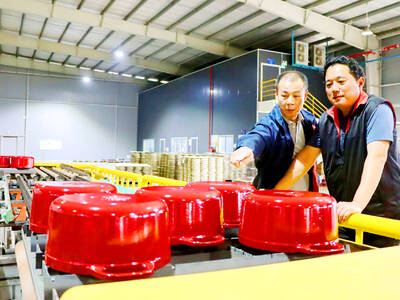India’s COVID-19 economic gloom turned into despair this week, on news that its per capita GDP for this year might be lower than that of Bangladesh.
“Any emerging economy doing well is good news,” Kaushik Basu, a former World Bank chief economist, said on Twitter after the IMF updated its World Economic Outlook. “But it’s shocking that India, which had a lead of 25% five years ago, is now trailing.”
Ever since it began opening up the economy in the 1990s, India’s dream has been to emulate China’s rapid expansion. After three decades of persevering with that campaign, slipping behind Bangladesh hurts its global image.
The West wants a meaningful counterweight to China, but that partnership would be predicated on India not getting stuck in a lower-middle-income trap.
The relative underperformance might also dent self-confidence. If a country with large-power ambitions is beaten in its own backyard — by a smaller nation it helped liberate in 1971 by going to war with Pakistan — its influence in South Asia and the Indian Ocean could wane.
Where have things gone wrong? The COVID-19 pandemic is definitely to blame. Bangladesh’s new infections peaked in mid-June, while India’s daily case numbers are starting to taper only now, after hitting a record high for any country.
With 165 million people, Bangladesh has recorded fewer than 5,600 COVID-19 deaths. While India has eight times the population, it has 20 times the fatalities.
What is worse, the severe economic lockdown India imposed to stop the spread of the disease is set to wipe out 10.3 percent of real output, the IMF said.
Fiscal squeamishness, an undercapitalized financial system and a multiyear investment funk would all delay India’s post-pandemic demand recovery.
Worse, even without the pandemic, India might have eventually lost the race to Bangladesh. The reason is nested in a new paper by economist Shoumitro Chatterjee of Pennsylvania State University and Arvind Subramanian, formerly India’s chief economic adviser, titled “India’s Export-Led Growth: Exemplar and Exception.”
Consider first the exceptionalism of India’s growth. Bangladesh is doing well because it is following the path of previous Asian tigers. Its slice of low-skilled goods exports is in line with its share of poor-country working-age population.
However, basically, it is taking a leaf out of China’s playbook. China held on to high GDP growth for decades by carving out for itself a far bigger dominance of low-skilled goods manufacturing than warranted by the size of its labor pool.
However, India has gone the other way, choosing not to produce the things that could have absorbed its working-age population of 1 billion into factory jobs.
“India’s missing production in the key low-skill textiles and clothing sector amounts to US$140 billion, which is about 5 percent of India’s GDP,” the authors said.
If half of India’s computer software exports last year ceased to exist, there would be a furor.
However, that US$60 billion loss would have been the same as the foregone exports annually from low-skill production. It is real, and yet nobody wants to talk about it. Policymakers do not want to acknowledge that the shoes and apparel factories that were never born — or were forced to close down — could also have earned dollars and created mass employment.
Bangladesh has two out of five women of working age in the labor force, double India’s 21 percent participation rate.
A bigger danger is that instead of taking corrective action, politicians might double down on past mistakes and seek salvation in economic self-reliance.
It is in dispelling this pessimism that the Chatterjee-Subramanian study comes in handy again: Contrary to popular belief, India has been an exemplar of export-led growth, doing better than all countries except China and Vietnam. The glass is more than half full.
Trade has worked for the country. It is the composition that is wrong, because of an unusual “comparative advantage-defying specialization,” the researchers say.
India exports a lot of high-skilled manufacturing goods and services, such as computer software.
However, as the world’s factory, China is now ceding room to others at the lower end of the spectrum.
That is where India’s opportunity — and the competitive advantage of its cheap and not particularly healthy or well-educated labor — really lies.
Given the urgent challenge of creating at least 8 million jobs year after year, it is also the country’s biggest post-pandemic headache.
Andy Mukherjee is a Bloomberg Opinion columnist covering industrial companies and financial services. He was previously a columnist for Reuters Breakingviews. He has also worked for the Straits Times, ET Now and Bloomberg News.
This column does not necessarily reflect the opinion of the editorial board or Bloomberg LP and its owners.

UNCERTAINTY: Innolux activated a stringent supply chain management mechanism, as it did during the COVID-19 pandemic, to ensure optimal inventory levels for customers Flat-panel display makers AUO Corp (友達) and Innolux Corp (群創) yesterday said that about 12 to 20 percent of their display business is at risk of potential US tariffs and that they would relocate production or shipment destinations to mitigate the levies’ effects. US tariffs would have a direct impact of US$200 million on AUO’s revenue, company chairman Paul Peng (彭雙浪) told reporters on the sidelines of the Touch Taiwan trade show in Taipei yesterday. That would make up about 12 percent of the company’s overall revenue. To cope with the tariff uncertainty, AUO plans to allocate its production to manufacturing facilities in

TAKING STOCK: A Taiwanese cookware firm in Vietnam urged customers to assess inventory or place orders early so shipments can reach the US while tariffs are paused Taiwanese businesses in Vietnam are exploring alternatives after the White House imposed a 46 percent import duty on Vietnamese goods, following US President Donald Trump’s announcement of “reciprocal” tariffs on the US’ trading partners. Lo Shih-liang (羅世良), chairman of Brico Industry Co (裕茂工業), a Taiwanese company that manufactures cast iron cookware and stove components in Vietnam, said that more than 40 percent of his business was tied to the US market, describing the constant US policy shifts as an emotional roller coaster. “I work during the day and stay up all night watching the news. I’ve been following US news until 3am

Taiwan will prioritize the development of silicon photonics by taking advantage of its strength in the semiconductor industry to build another shield to protect the local economy, National Development Council (NDC) Minister Paul Liu (劉鏡清) said yesterday. Speaking at a meeting of the legislature’s Economics Committee, Liu said Taiwan already has the artificial intelligence (AI) industry as a shield, after the semiconductor industry, to safeguard the country, and is looking at new unique fields to build more economic shields. While Taiwan will further strengthen its existing shields, over the longer term, the country is determined to focus on such potential segments as

COLLABORATION: Given Taiwan’s key position in global supply chains, the US firm is discussing strategies with local partners and clients to deal with global uncertainties Advanced Micro Devices Inc (AMD) yesterday said it is meeting with local ecosystem partners, including Taiwan Semiconductor Manufacturing Co (TSMC, 台積電), to discuss strategies, including long-term manufacturing, to navigate uncertainties such as US tariffs, as Taiwan occupies an important position in global supply chains. AMD chief executive officer Lisa Su (蘇姿丰) told reporters that Taiwan is an important part of the chip designer’s ecosystem and she is discussing with partners and customers in Taiwan to forge strong collaborations on different areas during this critical period. AMD has just become the first artificial-intelligence (AI) server chip customer of TSMC to utilize its advanced